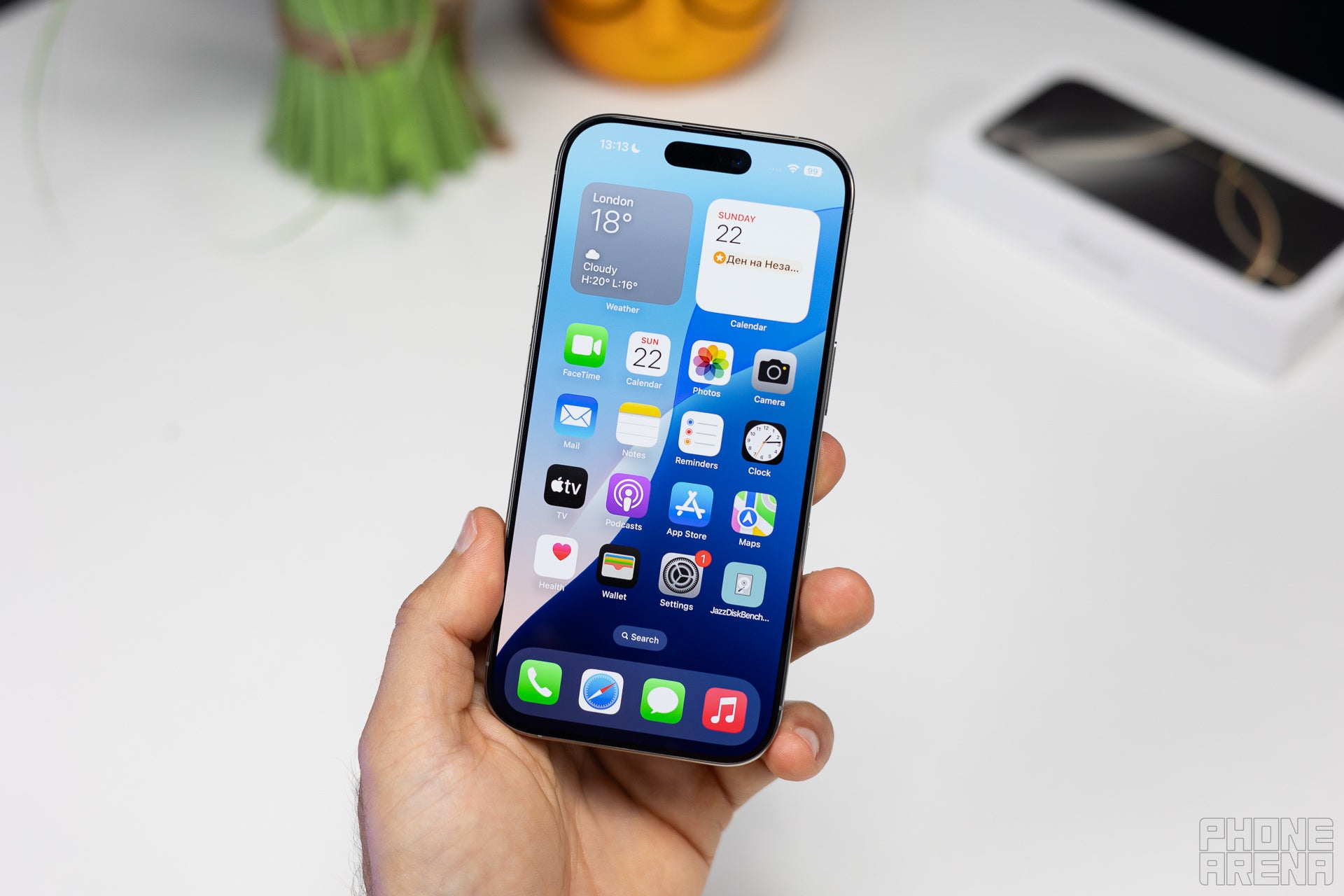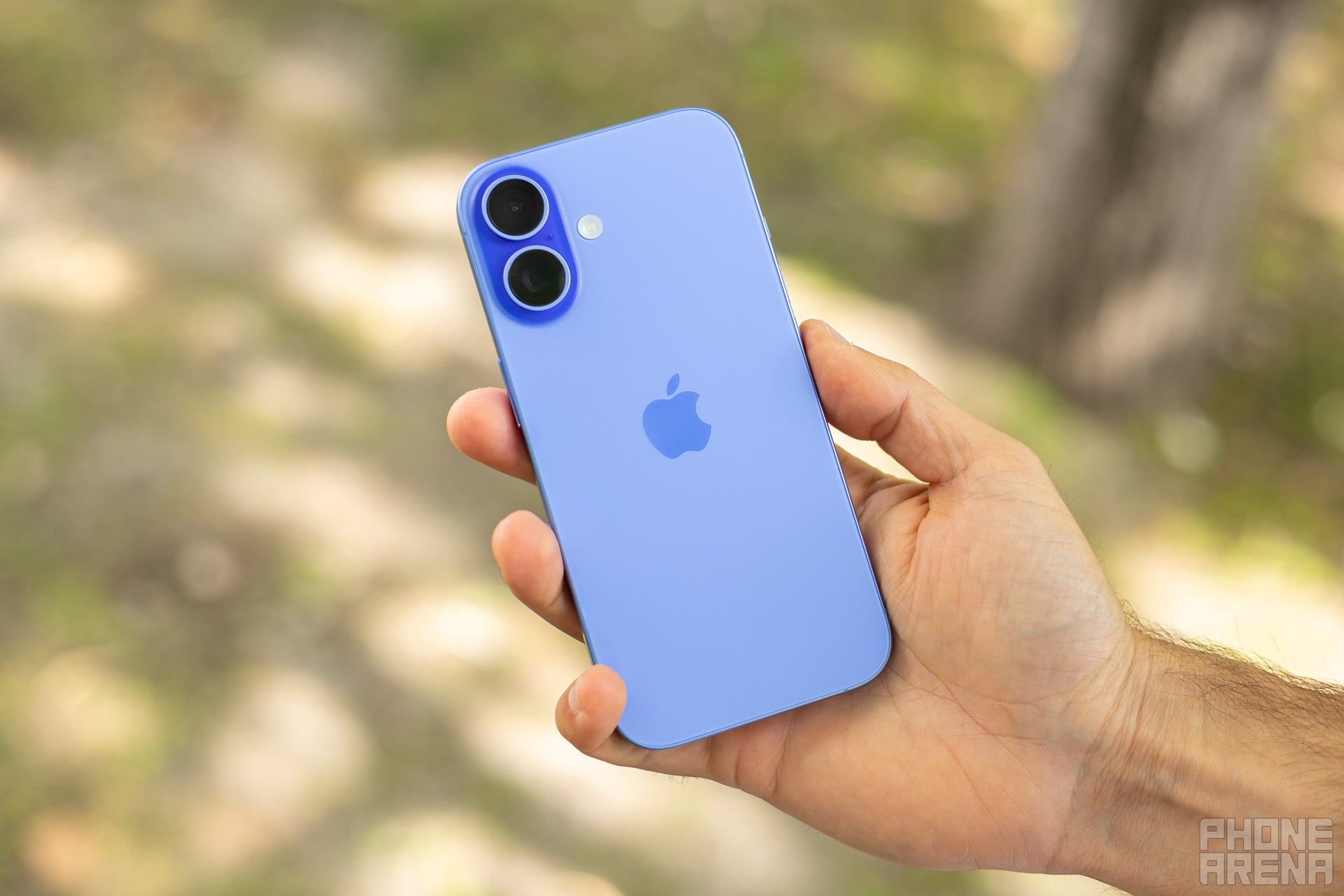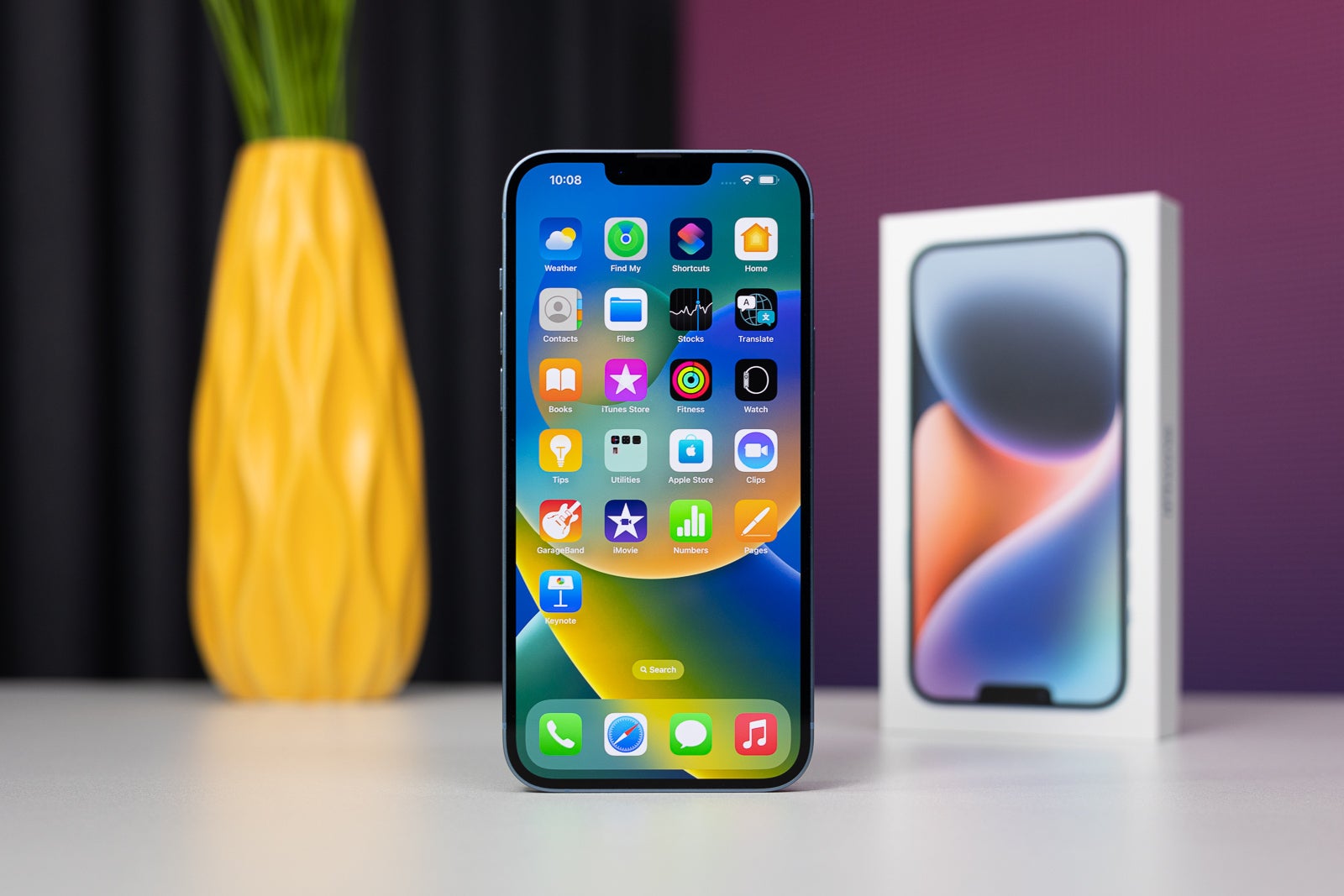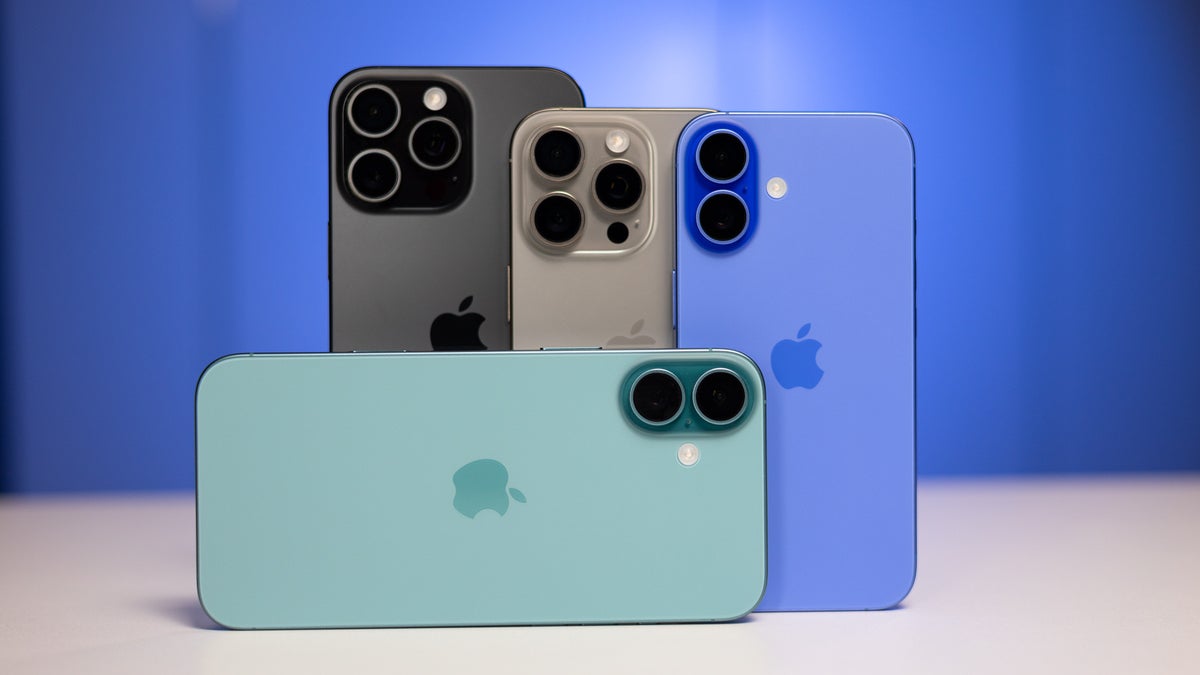It’s natural to ask, which is the best iPhone? Not necessarily in terms of tech and speed, of course — if you want the newest, fastest, best iPhone — just get the 16 Pro Max.
But most don’t need that type of overkill device, so looking at the other models is a logical choice. But trying to navigate the maze of best iPhone for the price may be a bit confusing and requires some forethought and knowledge of what’s come before. No worries, we gave the current iPhone portfolio some thought — and we have some suggestions for you.
So, the question is probably a bit more nuanced — what’s the best iPhone to buy, considering your specific needs and preferences?
The new iPhone 16 Pro Max does not look entirely redesigned, but it did get a couple of tune-ups. Notably, the display grew a bit — no up to 6.9″, from 6.7″. The difference is achieved by a much slimmer bezel and slightly bigger body. While the 0.2″ sceen size increase is not major, the iPhone 16 Pro Max does look much cleaner from the front, with that thinner border.
The iPhone 16 Pro Max and iPhone 16 Pro are currently the iPhones with the best cameras. The 15 Pro Max isn’t far behind, it just doesn’t have that ultra-wide camera upgrade. Plus, the new Photographic Styles and 4K slow-mo are reserved for iPhones 16 and up.
It’s a hefty investment, for sure, but certainly offers the top-tier Apple experience. The iPhone 16 Pro Max is the best overall smartphone, considering display, speakers, battery life, performance, and camera. And it had better be, as it starts at $1,200 for the base model. It least its lowest tier starts at 256 GB storage, but if you plan on enjoying the improved cameras with Cinematic Mode, and its ProRes video recording, you should plan ahead and just get a 512 GB model (at least).
Display: 6.9-inch 120Hz screen
Processor: Apple A18 Pro
RAM: 8GB
Cameras: 48MP main, 12MP ultrawide, 12MP telephoto (5x optical zoom), 12MP front-facing
Battery: 4685mAh
Storage: 256GB, 512GB, 1TB
iPhone 16 Pro
The iPhone 16 Pro is just as good as the Pro Max, not as big
PhoneArena Rating: 7.7
PhoneArena Battery Score: 6 hours 35 minutes
PhoneArena Camera Score: 154

(Image Source – PhoneArena) The iPhone 16 Pro
Stick with us, we know it kind of looks like we are just listing off the newest iPhones. But the iPhone 16 Pro is worth a mention here this year. Specifically because last year’s Pro pair had a difference between them — the 5x tetraprism lens.
Well, this year, the iPhone 16 Pro is back in the game. It has everything that the 16 Pro Max has — the 48 MP ultra-wide camera, the 5x zoom lens, the Camera Control button and Action button, and the same processor. No difference between the two. Aside from the screen size, but it’s noteworthy that the iPhone 16 Pro also has a slimmed-down bezel, so its own screen has grown to 6.3 inches, from 6.1.
In our experience, most users prefer that slightly smaller form factor. So, while it doesn’t have the monstrous battery life, we believe the 16 Pro will be the best new iPhone for shoppers this season.
So, if you want those Pro Max features but don’t want a slab of a phone, the iPhone 16 Pro is back to being the right viable choice. Take note that the battery is definitely smaller. It’s not that we couldn’t depend on the iPhone 16 Pro to last us a day, up to a day and a half, but the Pro Max definitely has that “two day” feel to it.
Oh, there is one more difference — you can still get it a bit cheaper. While the iPhone 16 Pro Max starts at 256 GB, nudging you to make that storage upgrade whether you want it or not, the iPhone 16 Pro still starts at 128 GB and $999. So, you get the power, the speed, the cameras and the Photographic Styles, all for $200 less. But that’s not the full story! Keep in mind, iOS will not let you record video in 4K ProRes if you don’t have at least 256 GB of storage, so if you are interested in recording and editing high quality video from your iPhone — plan ahead and get the storage upgrade.
Key iPhone 16 Pro Max specs:
Display: 6.3-inch 120Hz screen
Processor: Apple A18 Pro
RAM: 8GB
Cameras: 48MP main, 12MP ultrawide, 12MP telephoto (5x optical zoom), 12MP front-facing
Battery: 3582mAh
Storage: 128GB, 256GB, 512GB, 1TB
iPhone 15 Pro
PhoneArena Rating: 7.4
PhoneArena Battery Score: 5 hours 43 minutes
PhoneArena Camera Score: 152


(Image Source – PhoneArena) The iPhone 15 Pro
The iPhone 15 Pro is going the way of the dodo. And we feel it’s still worth a pick up. It still has the “old” 3x telephoto camera, but some users find it good enough, or even prefer it for Portrait mode shots. And it’s not as huge as a Pro max, so quite manageable.
Key iPhone 15 Pro specs:
Display: 6.1-inch 120Hz screen
Processor: Apple A17 Pro
RAM: 8GB
Cameras: 48MP main, 12MP ultrawide, 12MP telephoto (3x optical zoom), 12MP front-facing
Battery: 3274mAh
Storage: 128GB, 256GB, 512GB, 1TB
iPhone 16
PhoneArena Rating: 7.3
PhoneArena Battery Score: 6 hours 21 minutes
PhoneArena Camera Score: 149


(Image Source – PhoneArena) The iPhone 16
This year’s non-Pro models got a nice set of upgrades. In fact, in a shocking twist, Apple gave them a lot of the features from the Pro variants. The Action Button that was exclusive to the iPhone 15 Pro and 15 Pro Max last year is now here, on the regular iPhone 16 and iPhone 16 Plus. The brand-new Camera Control button is also available across the entire iPhone 16 series.
On top of that, the camera module has a new design, and we really like that new turn. It’s no longer a huge square that seemed to take much more space than it needed to, we are back to two camera lenses, stacled vertically. Quite reminiscent of the good old iPhone X!
But we are not done with the upgrades. Since the iPhone 16 and 16 Plus have to be able to run the Apple Intelligence featureset, they needed a bump in specs — Apple couln’t just stick old processors inside. So, we have a new Apple A18, which is about as fast as the A18 Pro, but with slightly less GPU power. And we have 8 GB of RAM, as in the Pro models!
So, while the iPhone 16 Pro Max may be the best iPhone of 2024, we have a sneaking suspicion that the iPhone 16 may be “the people’s champion”, coming with that fresh new look and extra power inside to make it feel like an actual upgrade (compared to older non-Pro units).
Key iPhone 16 specs:
Display: 6.1-inch 60Hz screen
Processor: Apple A18
RAM: 8GB
Cameras: 48MP main, 12MP ultrawide, 12MP front-facing
Battery: 3561mAh
Storage: 128GB, 256GB, 512GB
PhoneArena Rating: 6.6
PhoneArena Battery Score: 6 hours 49 minutes
PhoneArena Camera Score: 136


(Image Source – PhoneArena) The iPhone 14 Plus
But no, we still want to turn a spotlight to the iPhone 14 Plus model, especially in 2024. You can pick up a large-screened iPhone — if that’s your jam — for $699. No, you will not get any Apple Intelligence features, and you don’t get an Action Button or a Camera Control button.
But you still get that core iPhone experience, the Apple A15 Bionic is still a pretty good chip, the speakers are nice, the display is a huge 6.7-inch panel.
Display: 6.7-inch 60Hz screen
Processor: Apple A15 Bionic
RAM: 6GB
Cameras: 12MP main, 12MP ultrawide, 12MP front-facing
Battery: 4325mAh
Storage: 128GB, 256GB, 512GB
iPhone SE (2022)
Compact, classic design, most affordable iPhone
PhoneArena Rating: 4.6
PhoneArena Battery Score: 3 hours 56 minutes


(Image Source – PhoneArena) The iPhone SE from 2022
But Apple still keeps it relevant — the iPhone SE 3 (or iPhone SE 2022) is powered by the same chip that’s inside the iPhone 13 series. It has the same dependable-but-not-outstanding camera, it supports 5G connectivity and the convenience of wireless charging.
Now, if you are looking at the SE simply because you want a cheap iPhone, it may not be the best option, maybe look at the iPhone 14 instead. The iPhone SE starts at $429 for the 64 GB model and it is decidedly a phone for those that want the slim, small form factor that stays out of the way. Which is perfectly fine, but if you want a more modern iPhone experience, for as cheap as possible, the iPhone 14 is the better option.
In late 2024, we were hoping to see an update to the iPhone SE, but that didn’t happen. To be clear, two years is not a lot in iPhone standards, as they launch with a lot of hardware headroom (by iOS standards). However, the iPhone SE had an old chip in it when it came to market, and the A15 Bionic is now 3 year old tech. Hopefully we may see an update in early 2025?
Key iPhone SE (2022) specs:
Display: 4.7-inch 60Hz screen
Processor: Apple A15 Bionic
RAM: 4GB
Cameras: 12MP main, 7MP front-facing
Battery: 2018mAh
Storage: 64GB, 128GB, 256GB
Which iPhone is the best value for your money?
Looking at the present Apple iPhone lineup, we would say that the iPhone 13 is probably the best value right now. Its base tier comes with 128 GB of storage, which will be plenty enough for most users out there. On the inside and out, it is not worse than the iPhone 14, which was supposed to dethrone it. It does lack a 120 Hz screen and a telephoto camera, which is a shame, but such is the plight of non-Pro iPhones.
If you want those premium features, you’d have to make quite the leap in price.
However, the good news is that some wireless carriers and 3rd party retailers still have units of the iPhone 13 Pro and Pro Max in stock. If you are craving that telephoto camera for better portraits, and the smoothness of a ProMotion display — you may do well seeking one of those out.
Thanks to Apple’s software support, the 13 series still has a long life ahead of it, so it’s a worthwhile investment at this point in time.
How to choose the iPhone that best fits your needs?
There are two things to consider when buying a new phone. Your usage habits and your budget. Do you really need a huge Max model, if you only use iMessage and Instagram twice a day? If you game on your iPhone — do you play vertical games that require a one-hand grip, or do you immerse yourself in horizontal shooters? Naturally, the latter crowd will enjoy a bigger screen for sure.
It also helps that smartphone tech development has steadied in recent years, finding a comfortable plateau, and new features don’t pop up at a relentless pace. Meaning, new phones stay new for longer, as they aren’t immediately outshined by the next best thing.
Now, a lot can go wrong in these years, such as batteries going bad, but it’s worth noting that Apple has upped its game considerably since the old iPhone 6 fiasco.
So, as far as usage habits go, you need to consider this:
Phone size and design:
- Large phone: the Max and the Plus – if you watch a lot of videos, play a lot of games, browse tons of social media on your iPhone, or even edit your own clips and pictures, you will probably want to sacrifice the comfort of a small device and gain the benefit of a larger screen. In that case, the Pro Max models or the new iPhone 14 Plus will work out best. They also have the benefit of improved battery life, which lends itself well to your poweruser needs.
- Medium size: the regular models – you may wish to have a more comfortable grip on the phone, as you use it more to reply to messages and only watch talking head style YouTube videos. The regular iPhone with no Max or Plus monikers seems to strike this balance well. The screen has enough room for comfortable thumb-typing, and is big enough for the occasional enjoyment of multimedia. Yet, it’s not too large and you won’t be overwhelmed by its size if you decide to stick it in a case.
- Super compact: the mini – if you are out looking for a tiny smartphone that’s easy to pocket, yet packs a performance punch and a dependable camera — the iPhone SE is one of your very limited options. And it might as well be the best one, considering how much life it has left in it, thanks to the processor inside and Apple’s software support habits.
- Classic comfort, unexacting and simple: iPhone SE – if you or whoever you are buying for, prefers the older iPhone look and feel, with a Touch ID button — the only option is the iPhone SE.
Phone Features
- Camera – if you want a telephoto camera for better zoomed-in photos and more natural portraits, your option is quickly limited to the Pro models. Furthermore, if you want to experiment with the new-ish Cinematic Mode as well as the Photographic Styles — you need to go with an iPhone 13 series at the least. Needless to say, if you want the absolute best and most advanced Apple camera to date — you will find it on an iPhone 14 Pro and Pro Max.
- Screen quality – Across the board, Apple uses OLED panels for all recent iPhones, save for the iPhone SE. So, color reproduction and accuracy will be on equal levels across models. The Pro variants, however, have brighter screens, capable of hitting 2,000 nits. Impressive as it is, in the real world, you will rarely need that much brightness, so that’s not the real selling point here. No, that would be the 120 Hz ProMotion screen that is still being held hostage by the Pro iPhones — from the iPhone 12 Pro onwards.
Additionally, the iPhone 14 Pro and iPhone 14 Pro Max are the only ones with LTPO displays, capable of bringing their refresh rate down to 1 Hz. Apple utilizes this technology to get the Always On Display feature working on them — and only them, for the time being.
- Safety and security – The Secure Enclave is a subsystem within Apple chips that is present on all recent iPhones, making sure your sensitive data is encrypted and held safe on-device. As far as cyber safety is concerned, all modern Apple phones have you covered.
As for physical safety, iOS does provide Medical ID and Emergency SOS on all of them, however the new iPhone 14 series has a slight edge. If you find yourself an avid trekker, you may want the new satellite SOS feature, for some peace of mind. That and the new Crash Detection feature are only found on the 2022 iPhones.
Battery life
Apple always aims for an “all day battery life” with all its mobile devices. It typically achieves that, especially since iOS is fantastic at preserving battery charge when in standby mode. Some, however, exceed those expectations — specifically the Plus models and Pro Max models, which have room for larger batteries in them.
There are also some models that fall short — like the iPhone 12 mini, which wasn’t very dependable with its battery endurance. Especially if scanning often for an unreliable 5G connection.
Aside from that small mishap, most iPhones in recent years have had a dependable battery life.
Performance
in the case of the Apple iPhone, we typically trust that the performance is — and will be — top-tier for years to come. The Apple A silicon is excellent and way ahead of the game, outperforming and outlasting the competition on a regular basis. This is why Apple is comfortable with releasing an iPhone 14 series with the same chips that powered the iPhone 13, for example. Here is a rundown of the contemporary models and their capabilities:
- Apple A16 Bionic (iPhone 14 Pro, Pro Max): hexa-core, first Apple chip built on 4 nm process. Up to 3.46 GHz clock speed, 5-core GPU
- Apple A15 Bionic (modified for iPhone 14, 14 Plus): hexa-core, 5 nm. Up to 3.23 GHz clock speed, 5-core GPU
- Apple A15 Bionic (iPhone 13, 13 mini): hexa-core, 5 nm. Up to 3.23 GHz clock speed, 4-core GPU
- Apple A14 Bionic (iPhone 12): hexa-core, 5 nm. Up to 3.1 GHz clock speed, 4-core GPU
In other words — if Apple sells it on its website, it still considers it fast enough to wear the brand on its back with pride.
Here’s the performance of the iPhones in the lists on benchmark tests:
How we test phones
You will notice that we put emphasis on three different ratings with these phones. Here at PhoneArena, we have a dedicated battery rating, dedicated camera rating, and an overall scoring of the phone, which takes into account all of its important features — from design to display, performance, charging speed, and speaker quality. At first glance, the overall rating points may look a bit low, but that’s because every aspect of the phone is scored with our internal processes, developed specifically to be future-proof and combat “review score inflation”.
In other words — we do our best to use the full 1 to 10 scale, so an overall score of 7.6 is very good. To make it easier to understand where a specific phone falls, compared to its peers, we’ve added a “Price Class Average” metric, which shows you the average score from other phones in the same category.
